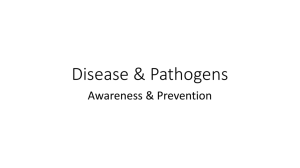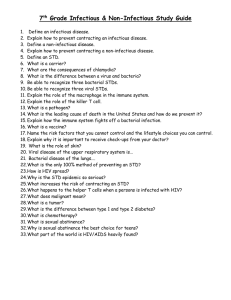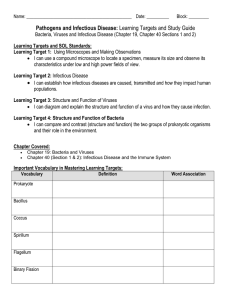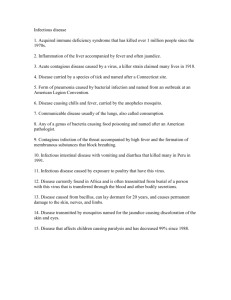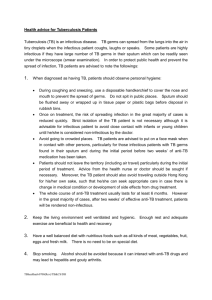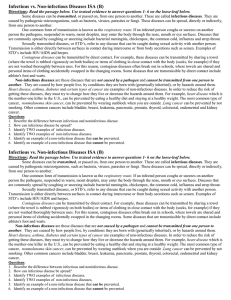File - Science with Ms. C
advertisement
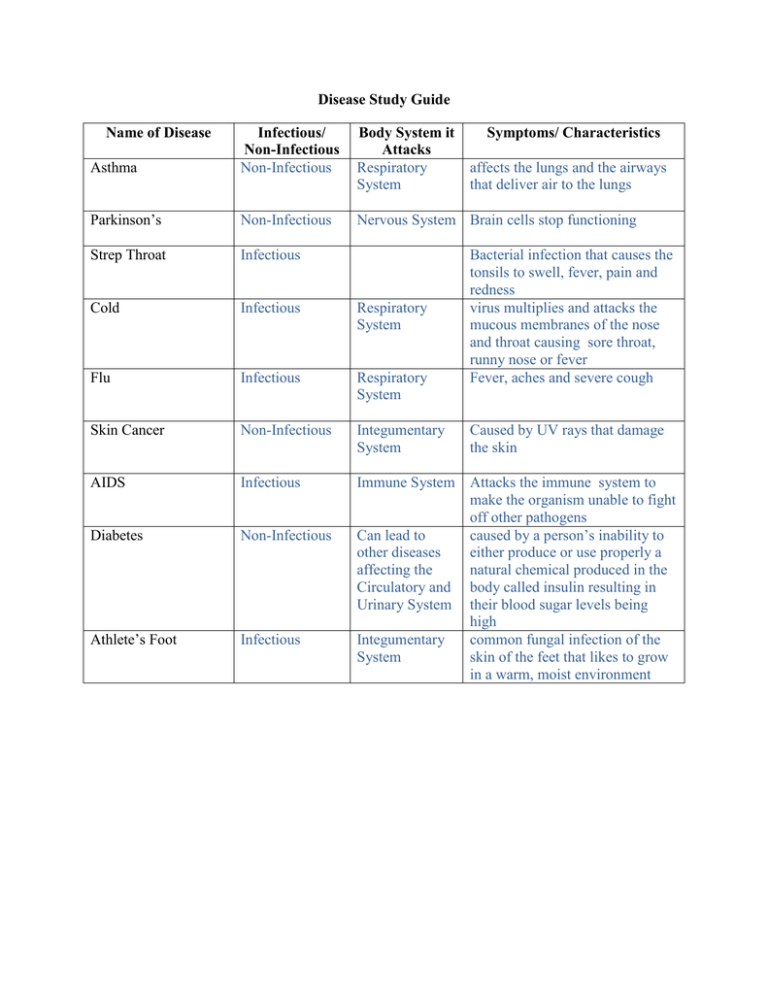
Disease Study Guide Name of Disease Asthma Infectious/ Non-Infectious Non-Infectious Body System it Attacks Respiratory System Symptoms/ Characteristics Parkinson’s Non-Infectious Nervous System Brain cells stop functioning Strep Throat Infectious Cold Infectious Respiratory System Flu Infectious Respiratory System Skin Cancer Non-Infectious Integumentary System AIDS Infectious Diabetes Non-Infectious Athlete’s Foot Infectious Immune System Attacks the immune system to make the organism unable to fight off other pathogens Can lead to caused by a person’s inability to other diseases either produce or use properly a affecting the natural chemical produced in the Circulatory and body called insulin resulting in Urinary System their blood sugar levels being high Integumentary common fungal infection of the System skin of the feet that likes to grow in a warm, moist environment affects the lungs and the airways that deliver air to the lungs Bacterial infection that causes the tonsils to swell, fever, pain and redness virus multiplies and attacks the mucous membranes of the nose and throat causing sore throat, runny nose or fever Fever, aches and severe cough Caused by UV rays that damage the skin Define the following terms: Disease Condition that does not allow the body to function normally Pathogens A bacteria, viruses, fungi, or protists that are spread in various ways. Infectious Disease Caused by tiny organisms called pathogens Non-Infectious Disease Caused by malfunctions in body systems that are either inherited or caused by environmental factors. Short Answer: 1. What causes an infectious disease? Pathogen 2. What cause a non- infectious disease? Malfunction in the body 3. What is used to treat or prevent a bacterial infection? Antibiotic 4. What is used to treat or prevent a viral infection? Vaccine 5. What is the purpose of the immune system? This is responsible for distinguishing between the different kinds of pathogens and reacting to each according to its type.
